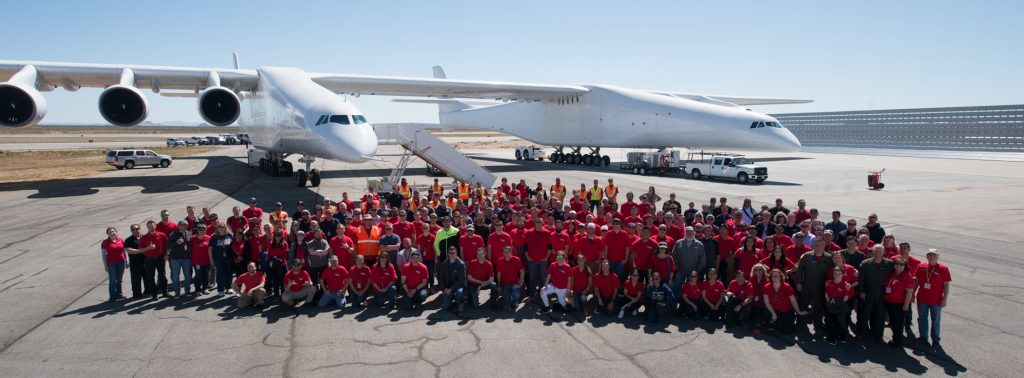Created by Scaled Composites, it will be used to release artificial satellites into the stratosphere, one step from space
With its 117 meters of wingspan, the
Stratolaunch
, built By the
Scaled Composites
by Burt Rutan funded by Microsoft‘s co-founder, Paul Allen, has written a new page in the aviation world. A first flight of about two and a half hours on the sunny desert of California, it was enough to test the manoeuvrability of the airplane, almost twice the size of a Boeing 747, and that will be destined, by the 2022, to carry rockets and satellites in the stratosphere.
The advantage will be that Stratolaunch will not be subject to adverse weather conditions, as is the case for the rocket carriers, and, in addition, a drastic reduction of the costs of the launches, currently carried out through expensive rockets that depart from launching ramps Terrestrial. Six engines, two twin fuselages, a weight of 227 tonnes and a load capacity of between 2 and 20 tonnes. Enough to transport ten thousand meters, between the two fuselages, a more economical rocket that will have the task of launching in orbit a satellite from a more advantageous position: the stratosphere.
Taking off from the Mojave Air & Space Port, Stratolaunch has reached a top speed of about 300 km/h and a share of just over 5 thousand meters. A non-excessive speed, but which guarantees, thanks to the high-elongation wing, to carry large loads at high altitudes and with little effort by the six Pratt Motors & Whitney PW4000. Just the consumption factor and the relative cost-effectiveness of the service provided by Stratolaunch, also made it interesting to Nasa to this project. The American space Agency, which has been orphaned by the Space Shuttle, which carried out its last mission in 2011, is now interested in having a more economical and reusable launcher.
